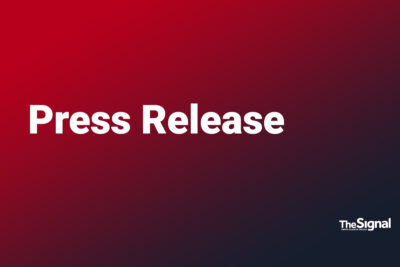LASD hosts annual active shooter training at Castaic High
Castaic High School’s campus was empty for the holiday Monday except for first responders, campus officials, student volunteers and site administrators from throughout the Santa Clarita Valley, who were there for a special lesson in how to respond to an active shooter.
The exercise is part of an annual training each of the department’s 23 stations is required to undergo each year, according to Deputy David Swigart of the SCV Sheriff’s Station.
The lessons are led by the L.A. County Sheriff’s Department’s Tactics and Survival Unit, said station Capt. Justin Diez. Community representatives from local campuses, Henry Mayo Newhall Hospital and several local congregations were invited to take part in the discussion.
Prior to the start of the drill — which involved student volunteers who showed up at 6:30 a.m. on their day off to volunteer to play the role of shooting victims — Diez hosted a question-and-answer session in the school’s auditorium after a brief video on school shootings.
Attendees asked about the procedures shown, and the reality is, everyone is going to have to figure out the best practices for their respective environments, he said.
“The main point is ‘Run. Hide. Fight,’” Diez said, which experts have identified as the best practices for anyone confronted with such a crisis.

The range of attendees included a representative from California Institute of the Arts in Valencia to a local Christian church that has a much smaller campus, and while the video is eight or nine years old, the training is the same today, he added.
It’s really about reinforcing the mindset that everyone needs to have in an emergency, he added, because that’s what matters most. Someone might be on a different campus or environment than what they’re used to when an actual crisis happens.
Mason Willison, 14, a West Ranch High freshman and Air Force ROTC cadet who volunteered to help with the training, was designated to portray a shooting victim during the exercise.
“It made me think about it a little bit,” he said. “I feel like if this were to be real, I would most likely be safe.”
Some, including more experienced William S. Hart Union High School District officials who offered the campus to the SCV Sheriff’s Station for the drill, knew the exercise was anything but academic.

About 12 miles away, Saugus High School is still dealing with the aftermath of a shooting that happened a little over four years ago, in November 2019, which left five students wounded and three dead.
While the last class of students who were on campus as freshmen during that tragedy graduated over the summer, their siblings, staff and other community members still have the potential to be affected by that regularly, according to mental health experts.
Elizabeth Peisner, associate vice president of student affairs at CalArts, said she was there to discuss and learn more about what other campuses are doing with respect to best practices and keeping students safe.

“Our campus has a good relationship with the L.A. County Sheriff’s Department in Santa Clarita,” Peisner said, “and I feel like they would be able to help us be prepared in the event that a tragedy like this should ever occur.”
Peisner has been at CalArts for a little over two years, but she came from a community that also was rocked by such a tragedy and recognized that such an event can leave a lasting impact.
At her previous place of employment, Florida Atlantic University, she recalled in 2018 when her coworkers received alerts to pick up their children in the aftermath of the Marjory Stoneman Douglas High School shooting. FAU is blocks from the Parkland school campus where 17 students were killed.
In the aftermath of the tragedy, the college worked with the local high school to help with counseling resources, and she said it also made the campus more aware.
“This is a subject that has impacted communities I have lived in before,” she said, “so it’s something I always keep in the back of my mind.”








